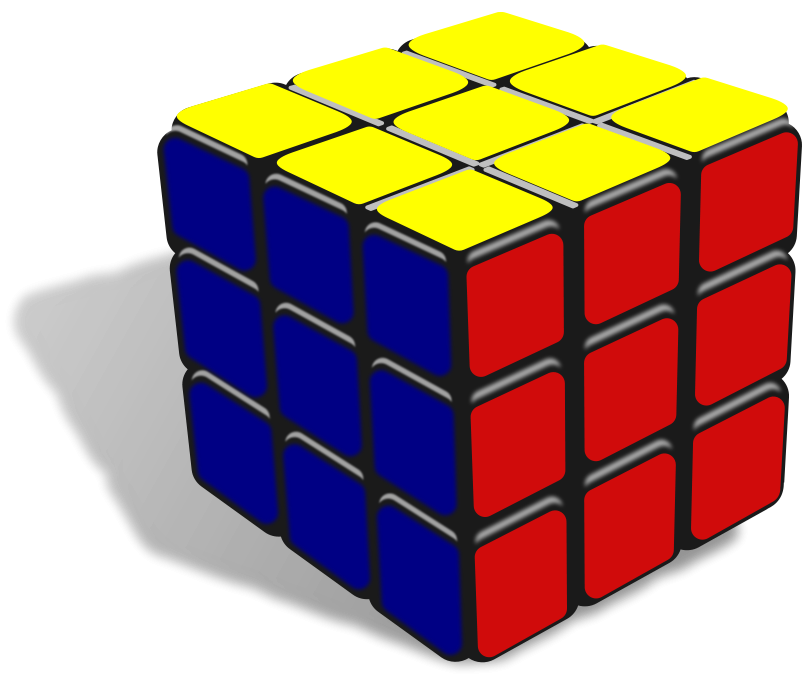
For those of you who missed the decade between 1975 and 1985, the Rubik's Cube is a 3-D combination puzzle and toy. Ernő Rubik invented in 1974. He was an Hungarian sculptor and professor of architecture. Originally its name was "the Magic Cube." Multiple squares in different colors line each side and move independently of each other. Rows can be moved as a unit in the north-south direction or the east-west direction. By twisting and spinning the rows, using differing axes, you can create a cube that has only a single color of squares on each side. They have invented computer algorithms to figure out the solving process. Of course, that is cheating the same way, reading the last chapter of a mystery instead of starting at the beginning of the book and reading straight through to the end is.
As in my favorite mysteries, the solution should be hard to reach, but it should in retrospect be logical and almost obvious when all the facts are considered from the right point of view - via the retrospectoscope. Every pertinent fact must ring true. They must fit like jigsaw puzzle pieces.
Red herrings viewed from the book's conclusion should have been discountable, but somehow are not dismissed immediately by the reader. The process of solving must be not so hard as to discourage the reader from trying, and yet, not so easy so that the reader needs no effort to reach the right conclusion. Certainly, the final answer of whodunnit, should not be so obvious as to make the story unable to hold the reader's interest, but at the finish, the reasoning and logic must stand out like a single color on each side of the Rubik's Cube.
I love colorful characters. I love wonderful setting that bring me into the picture to stand next to the detective, but most of all, I want to struggle to figure out who killed the victim, so that I have a feeling of accomplishment when I reach the conclusion. I want lots of pieces that I must move around and align just right so that I can conclude who dunnit.
If I accuse the wrong character of being the murderer, that is better than if I know who the killer is before the middle of the book. Those type of manuscripts fit into the genre of suspense, where we know who is the bad guy, but we don't know if he will be caught. I'm a mystery fan, not suspense.
Think about it. Suspense by nature is more about the procedural part of crime apprehension, and mysteries were more about the mental aspects - deducing from facts, and using logic to reach the conclusion. Often they have physical apprehension, but just knowing who the killer is represents the goal in murder mysteries.
In a good mystery, like the Rubik's cube, all the facts are on the table before the end of the book, and we, the readers, have the opportunity to succeed, but it takes perseverance and brain power to reach the goal of who, how and why - to align all the colors on their side.
-- L.A. Preschel

The art work for this essay was taken from non-copyright Rubix Cube Clip Art.
No comments:
Post a Comment